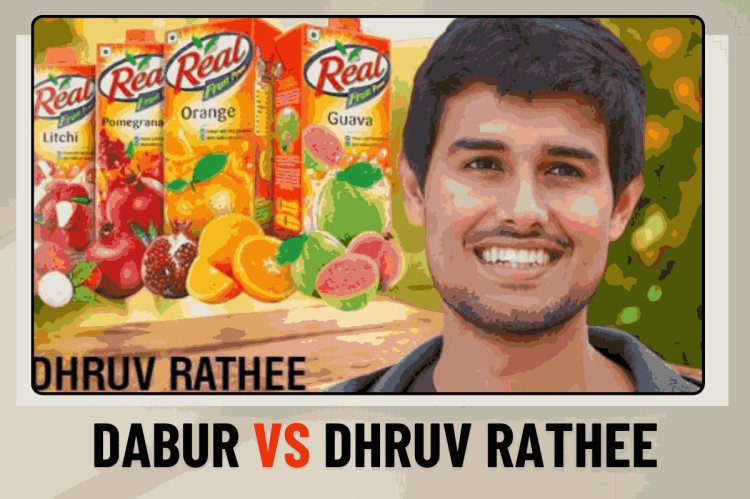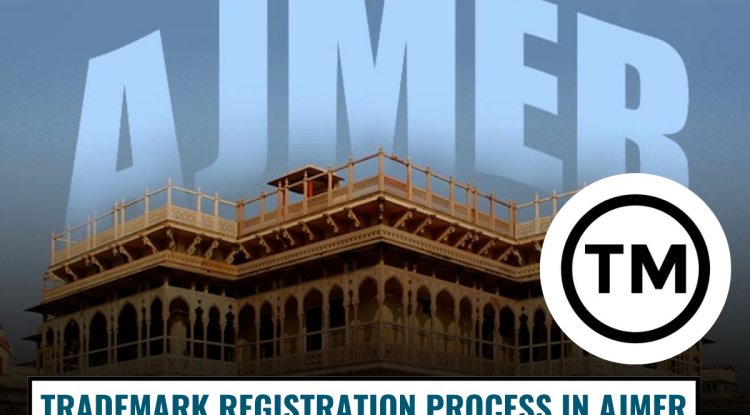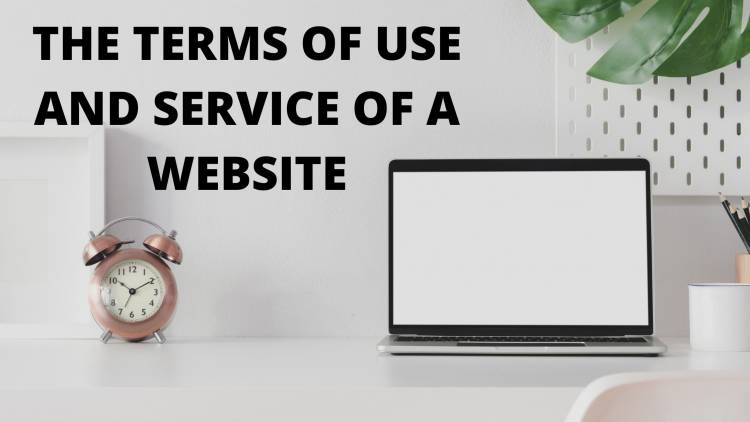TRADEMARK DISPUTE BTTWEEN : DABUR V. DHRUV RATHEE
The case of Dabur India Limited v. Dhruv Rathee presents a significant legal issue at the intersection of intellectual property rights and freedom of speech. In this case, Dabur India Limited, a well-known Indian brand, filed a lawsuit against YouTuber Dhruv Rathee for allegedly infringing on its trademarks and copyrights by using a blurred version of their "Real" fruit juice logo in a critical video. Rathee defended his content as an exercise of free speech, aimed at informing the public about health risks associated with packaged fruit juices. This blog delves into the legal frameworks involved, including the Trade Marks Act, Copyright Act, and constitutional provisions on free speech. It explores the arguments presented by both sides, the court's resolution, and the implications for social media influencers in balancing rights and responsibilities when engaging with commercial brands. The case serves as a precedent for future disputes involving content creators and large corporation

INTRODUCTION
In the digital era, social media influencers hold substantial sway over public opinion, often blurring the lines between personal expression and legal responsibilities. The case of Dabur India Limited v. Dhruv Rathee is a notable example of this clash between an influencer's right to free speech and a corporation’s need to protect its intellectual property. Dhruv Rathee, a prominent YouTuber, criticized packaged fruit juices, including Dabur’s “Real” Fruit Juice, in a video that triggered a legal response from the company. Dabur alleged trademark and copyright infringement, arguing that the use of their blurred logo without consent harmed their brand reputation.
This case not only brings attention to the growing influence of social media but also highlights the legal complexities influencers face when their content impacts established brands. As the Court balanced the right to free speech with the protection of intellectual property, this case sets a precedent for future disputes involving content creators and large corporations.
BACKGROUND OF THE CASE
Mr. Dhruv Rathee, a prominent YouTuber and social media influencer known for his critique of consumer products, became embroiled in a legal dispute with Dabur India Limited over a video in which he compared the health implications of carbonated drinks with packaged fruit juices, specifically targeting Dabur's "Real" Fruit Juice. Dabur filed a petition in the Calcutta High Court, alleging that Rathee's video constituted trademark and copyright infringement, as well as disparagement of their brand.
FACTS OF THE CASE
In his video, Rathee used a partially blurred logo of "Real" fruit juice, discussing the health risks associated with consuming packaged juices, including potential connections to conditions like type 2 diabetes. Dabur, holding registered trademarks for “REAL,” “REAL FRUIT POWER,” and related marks under Class 32, asserted that Rathee's content not only misrepresented their product but also damaged their brand's reputation built over years of investment and marketing.
KEY ISSUES
The case presented several pivotal legal questions, including:
1. Trademark and Copyright Infringement: Did Rathee's use of Dabur's trademark without consent amount to infringement under the Trade Marks Act, 1999?
2. Defamation: Were Rathee's statements regarding the health effects of packaged fruit juices defamatory towards Dabur's products?
3. Balancing Rights: How do we balance the defendant's right to freedom of speech against the plaintiff's rights to protect their intellectual property?
PARTIES INVOLVED
- Petitioner: M/s Dabur India Limited, represented by Mr. Sudipta Sarkar, Senior Advocate, and other counsel.
- Respondent: Mr. Dhruv Rathee & others, represented by Mr. Utpal Bose and Mr. Phiroze Edulji.
COURT AND KEY DATES
- Court: Hon’ble High Court of Calcutta, Ordinary Original Civil Jurisdiction, Original Side [Commercial Division].
- Date of Initial Petition: March 15, 2023.
- Latest Order: June 18, 2024.
LEGAL FRAMEWORK
The legal arguments in this case hinged upon several key sections of Indian law:
Trade Marks Act, 1999
- Section 29(9): Addresses the infringement of trademarks by both spoken use and visual representation.
- Section 30: Limits the effects of registered trademarks, providing exceptions for honest use.
To know more about infringement kindly follow the link below:
Copyright Act, 1957
- Section 51: Outlines when copyright is infringed.
- Section 52: Lists certain acts that do not constitute copyright infringement.
Constitution of India
- Article 19(1)(a): Guarantees the right to freedom of speech and expression.
- Article 19(2): Allows for reasonable restrictions on freedom of speech.
Civil Procedure Code, 1908
- Order XXXIX, Rule 1 & 2: Pertains to granting temporary injunctions to restrain breaches.
Indian Penal Code (IPC)
- Section 499: Defines defamation.
- Section 500: Provides the punishment for defamation.
ARGUMENTS FROM BOTH SIDES
Dabur's Position
Dabur contended that Rathee's use of their trademark was a blatant violation of their intellectual property rights. They argued that the negative portrayal of their product as dangerous for health directly undermined their brand reputation. By using the blurred logo of "Real," Rathee blurred the lines of fair use, leading to potential consumer confusion and reputational damage.
Rathee's Defense
In contrast, Rathee maintained that his video was an exercise of his right to free speech, aimed at informing the public about the potential health risks associated with packaged juices. He argued that his claims were based on factual information regarding the ingredients in "Real" fruit juice. Ultimately, Rathee expressed a willingness to blur the logo in future uploads to mitigate any legal concerns.
LATEST DEVELOPMENTS IN THE CASE
On June 18, 2024, the Calcutta High Court announced a resolution to the dispute, noting that Rathee had agreed to modify his video to remove any direct references or uses of the "REAL" trademark. The Court emphasized the importance of protecting intellectual property rights while simultaneously respecting the principles of free speech.
THE COURT’S RULING AND ANALYSIS
While the Court's decision to settle the case highlights the ongoing tensions between intellectual property rights and free speech, it also opens the door to important discussions about the implications for content creators. By mandating that Rathee blur the trademarked logo, the Court underscored the significant protections granted to brands against perceived disparagement, even in contexts that might seem harmless or merely informative.
IMPLICATIONS FOR SOCIAL MEDIA INFLUENCERS
This case serves as a crucial precedent for influencers and content creators. It illustrates the need for caution when discussing or critiquing commercial products, particularly when trademarks are involved. The legal landscape is evolving, and content creators must navigate these waters carefully to avoid potential legal pitfalls. Influencers should ensure their critiques are not only factually supported but also articulated in a manner that minimizes any risk of legal repercussions.
BALANCING RIGHTS AND RESPONSIBILITIES
The Dabur v. Dhruv Rathee case raises essential questions about the balance of rights in the digital age. While it is critical to protect intellectual property rights, it is equally important to uphold the right to freedom of speech. The judiciary must strike a balance that allows for public discourse while protecting the interests of businesses.
CONCLUSION
In conclusion, the Dabur v. Dhruv Rathee case is a testament to the complexities at the intersection of consumer rights, corporate interests, and freedom of expression. As social media continues to shape public discourse, it is imperative for influencers like Rathee to engage responsibly with their audiences, remaining mindful of the legal boundaries that govern their content.
This case not only reinforces the significance of trademark protection but also underscores the judiciary's critical role in navigating these challenging waters. As we move forward, the legal frameworks must evolve alongside digital media to foster an environment where freedom of expression and intellectual property rights can coexist harmoniously.












